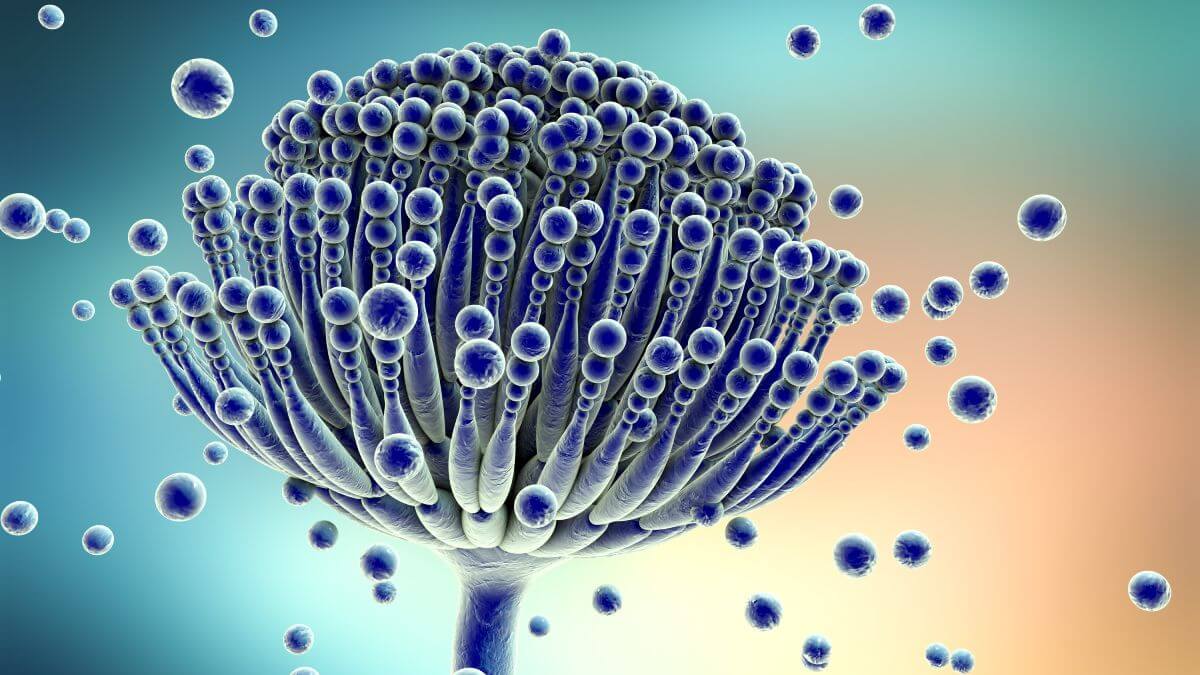Most of us are aware of the potential damage climate change is doing to our planet. For those who have been affected by increasingly frequent floods and other weather events, the awareness is heightened. Now it appears that climate change could be creating serious health problems. In a new study, the phenomenon has been linked to a surge in liver cancer cases in Australia.
If you’re wondering how climate change can lead to liver cancer, you’re not alone. The answer, it appears, is fungus. Specifically, the Aspergillus fungus, which has begun to thrive and spread as temperatures have increased.
To blame Aspergillus fungus directly for the increased liver cancer rates is slightly unfair. The real culprit is Aflatoxin, a toxin produced by the fungus, which has a long-established link with liver cancer.
The argument for Aspergillus fungus driving up liver cancer rates is supported by an interesting observation in the study. The study, published in the journal Science of The Total Environment, found that “the risk of liver cancer is higher in the equatorial [northern] region in Australia”.
And it so happens that Aspergillus fungus is found more in Australia’s warmer northern climes than it is down south. “The rapid increase in liver cancer may be linked to the climate in Australia,” the report concludes.
Popular plans right now
Liver cancer the outlier
In terms of worldwide cancer patterns, liver cancer is bucking the trend. The rates of almost all other cancers have been falling for some time now. The outlying nature of liver cancer was one of the motivators for this study, according to co-author Professor Wenbiao Hu.
Prof. Hu, from the Queensland University of Technology, said: “We found liver cancer increasing. But we couldn’t find a reason.”
The correlation uncovered in the study serves to make a pretty good case for a link. But you will notice the study’s conclusion the phrase, “may be linked”. Like all good research studies, this one acknowledges that correlation does not always equate to causation.
Untangling the factors
And, according to another researcher, there may be another factor at play here. Dr Barbara de Graaff, Senior Research Fellow at the Menzies Institute for Medical Research, points to genetics.
Dr de Graaff describes the new study as fascinating and worthy of follow-up, but she also issued a caution. “The one thing the authors did not consider is up in the regions where they are finding very high rates of liver cancer, they have got a different genetic variant of hepatitis.”
Hepatitis B is another cause of liver cancer, and the study’s authors factored this into their models, but did not account for the genetic variant, Dr de Graaff said.
Complicating matters further still is lifestyle. Higher rates of obesity and diabetes in Australia may also be contributors to an increased prevalence of liver cancer.
Untangling the role each of these factors may play in the rise of liver cancer rates is no easy task. Further research will clearly be required to find a definitive answer.
Such an answer may be some way off. Until then, slowing the rate of global warming and improving our diets are pretty good stopgap measures.
Also read: Timing of cancer diagnosis and treatment matters, research finds


I am happy to say that I have ” managed” to exist for 83 years – through war, shortages, unemployment, high taxes and am very happy with my life and family and friends – now, for Gods sake all you experts and supposed experts – STOP shoving this constant crap down our throats – soon, people will be afraid to breath, eat or drink. Somehow, someone in the green/BS groups has forgotten to tell someone in Victoria that there is this thing called – global warming – we had very little summer and 2 days ago our minimum temp was 4.9 degrees !!!!! Enough is enough, bugger off and leave us alone – migrate to China or other polluting countries – yes, I am angry.
Well said Tomtom. Took the words right out of my mouth.
And then again, Andrew, this “global warming” may have absolutely no connection with the apparent rates of increase in cancers of the liver. None at all.
Tucked away in this article is the “elephant in the room”. Staring everyone in the face. Lifestyle leading to obesity and diabetes.
As there has been no terrestrial increases in temperature associated with human activity, it is fanciful to try and claim that the increases in cancers of the liver could be related to “global warming”
As far as your “slowing the rate of global warming”, not going to happen from anything that happens in Australia. You may’ve noticed that officially, the term “global warming” is now so last century and replaced “climate change” and especially now “climate crises” and “climate emergency”. Terms designed to alarm the scientifically illiterate but with no foundation in recorded fact.
Improving peoples diet may actually be the most important measure to reduce the increasing rates of cancers that may have a causal relationship to that. However, that goes back to the individual taking responsibility for their own health and not expecting the magic bullet prescribed by a medical professional.
Well said Couldabeen. At last we are hearing some facts about the “global warming” scam that are based in real science and not politics.
I very much like your diagrammatic representation of Aspergillus fumigatas. Excellent. I have grown this fungus down here in Tasmania back in the 70s and 80s from patient’s chests. So it was around then , and in cold climes.
Thanks Frank. I hoped someone would notice!!